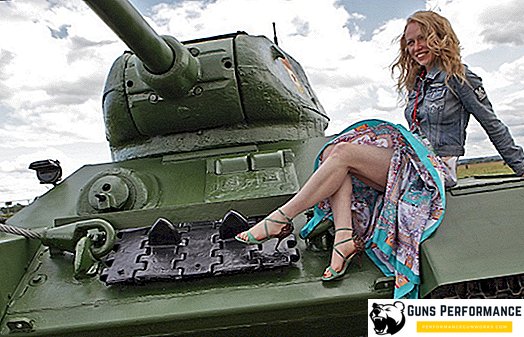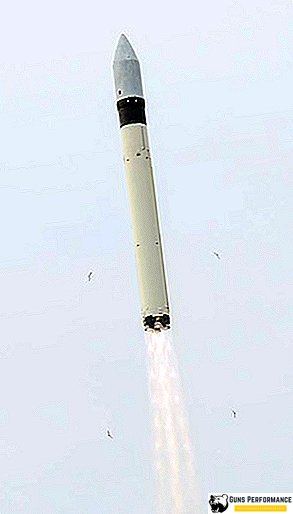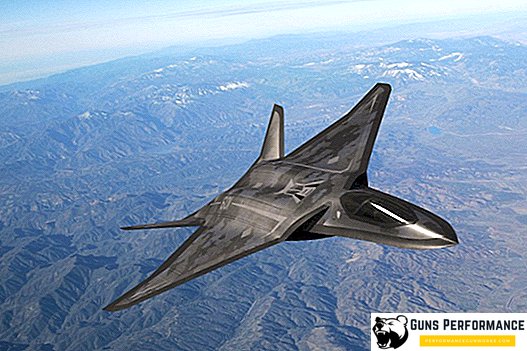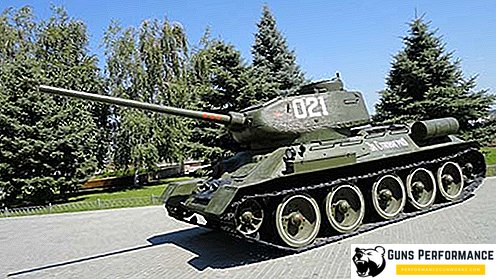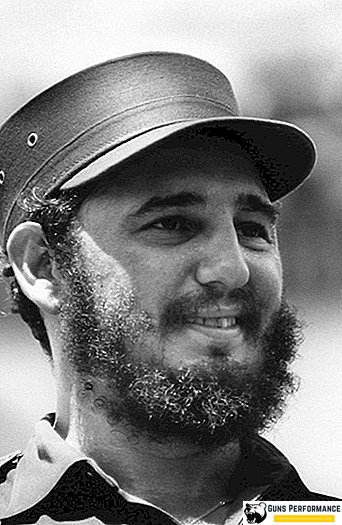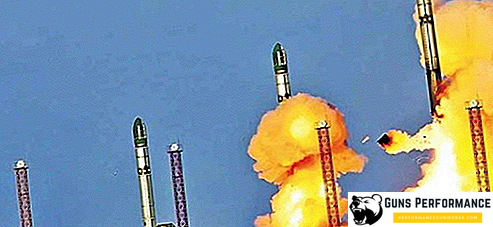In this review we will speak not about cobblestone (which, as is known, the weapon of the proletariat), but about much more technological devices that require some ingenuity in production. This kind of arsenal has more than one dozen titles, so we touch only some of them. Subsequently, if readers are interested, we will continue to talk about weapons fictions, which are cunning homeless geol. But first -
Teen gangs of Central Asia
Speaking about the rampant juvenile delinquency during the Second World War, historians most often recall Rostov-Papa and Odessa-Mama. However, this is done as if reluctantly, since at that time it was enough of quite “adult” crime. They also recall the film "Bastards" and his ilk. In the meantime, the reality of reality has sometimes been worse than the director's specialties. Homeless kids got lost in gangs and poisoned the lives of home front workers almost as bad as occupiers. This happened almost throughout the USSR. Strange as it may seem, Central Asia, as is well known, was deep in the rear during the war years, did not escape this fate. It was here that children from the orphanage, homeless children who lost their parents and even minors convicted of minor crimes were evacuated.
Much of what these gavroshes used to intimidate the man in the street has migrated to our day and is successfully used by their followers. Consider some samples of "street" weapons.
Gilt, "bolt" or matches

As the name suggests, it must be made of lead. It is a small ingot of this metal, clamped in the palm of your hand to enhance the impact. In fact, it was any hard and heavy object that could be clamped in a fist. It could be a small stone, a large bolt with nuts screwed on it. Often used even a matchbox, which plays the role of psychological weapons. The fact is that the matches were then packaged not into cardboard containers, but into those made from thin veneer. In contact with the opponent's jaw, this “weapon” made a crackling sound, which resembled the sound of a broken bone. Here the bully was important not to yawn, but quickly neutralize the victim, while she touched the search for a fracture. Relatives of this kind of weapon were
Brass knuckles
Kisten is known to man since ancient times, while brass knuckles are much younger. A brush is known to be a sinker at the end of a rope, chain, or other flexible connection. A simple footcloth with a smooth cobblestone wrapped in it could become the simplest variant of a kisten. A similar device is made in one of the films by Steven Sigal, only instead of a footwoman he has a towel, and instead of a cobblestone - a billiard ball. This "device" received the name "extinguished" among the punks of the forties and fifties. Subsequently, so began to call another device, which we will discuss below. A blow to the opponent’s head sent him a knockout: I don’t want to steal what is called!

Sometimes a thick string was used as a flexible ligament, for example, from a guitar. As a load, several large nuts were put on it. The technique of application here was different from the brush. It was important not to stun the enemy, but to strike him with a snag, as a result of which the string cut through the soft tissues. Such a weapon was hardly used during raids; rather, it was an attribute of fights on the theme “who is better”. It was important for the leaders of street gangs to make as many cuts to the enemy as possible, to “paint” it. Subsequently, the term began to mean the application of surface wounds with a razor or other sharp weapon.

The brass knuckles are a logical continuation of the pig. Literally translated from French, the name means "puzzle". But the French were not the discoverers of the "puzzle", since the first brass knuckles were used in medieval Japan. These were four studded rings with spikes. The spikes were often smeared with poison, but they could have brought trouble to the opponent without it. The only drawback of this weapon was the ability to break your fingers, but the Europeans (presumably, just the French) came up with a palm rest, at the same time serving as an impact amplifier.
During the Great Patriotic War, brass knuckles were produced industrially as an auxiliary weapon for the soldiers of some European armies (Germany, England, etc.), but among punks it was not too common. It's clear: go and find metal suitable for casting, if in the country everything is for the front and everything is for victory.
Piercing cutting weapon
We probably won't talk about different kinds of knives, since the topic has been studied in detail by different authors. Under wartime conditions, hooligans mainly had kitchen and shoe knives, razors and scissors. Even the "rose", i.e. bottleneck with sharp fragments, it was difficult to find. Glass containers in large quantities were sent to the front for the manufacture of anti-tank "lighters". Something worth mentioning is a “dusting” - a sharp piece of tin, part of which was wrapped in a rag and formed a handle. Despite the simplicity, it was a formidable weapon. Soft metal, hitting the bone (as a rule, it was a rib), easily bent, bending around an obstacle, and reached the vital organs. And it was almost impossible to pull out the “dust wiper” without the help of a surgeon.
Dubs and "pouches"
Roughly speaking, everything that could have stunned the enemy along the ridge was suitable here. Perhaps the least common weapon among young, but already professional robbers. The unpopularity was due to the inconvenience of wearing. With a more or less weighty "argument" in the hands, you will not run far, and the tactics of the hooligans were most often "flown, selected, ran away." All sorts of delights, like Japanese tonfa, were unknown to the forties of the forties and fifties, and the usual short piece of stick did not look frightening for the layman. It could be stuck with nails, but it was inconvenient. What good, it was possible to tear the clothes, your own (when worn) or the victim (upon impact) - no difference.
An alternative to the baton was a small linen bag filled with wet sand. Such a weapon was compact, did not leave any traces of beatings on the victim, and if necessary the sand could be quickly shaken out and brought to the policeman by peaceful passers-by. Much later, such a device will be adopted by American gangsters, and then the police. Only instead of pouch sand will be packed in a narrow long bag of denim. However, residents of the overseas power is not the first time to use other people's ideas.
Conclusion

We deliberately did not mention here many more types of street weapons, limiting ourselves only to what could be found in the hands of juvenile robbers of military times. In the following parts of the review we will look at more modern samples.


